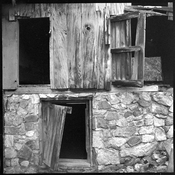Sanders,
If you are scanning 8x10 negatives, absolutely not.
If you are scanning 35mm negatives, there are excellent arguments for scanning using a digital camera.
Given what I've seen of the quality of your scans from 6x6 negatives, I would say why change?
Unless the volume of scanning you need to do makes the switch advantageous.
Case in point re: the existing quality of your photography (hope you don't mind):
View attachment 324289
Matt, thanks for the comment, and the compliment -- you are kind. FWIW, that was a 4990 scan of a Tri-X negative I shot with a Rolleiflex ages ago.
These days, I am printing platinum-toned kallitypes using digital negatives. I've just started shooting film again for these prints -- until now I've been shooting a Sony A7 with an IR sensor. But I finally shot a Rolleicord for this series with an expired roll of Efke 100, and I liked what I got with it -- the 4990 at 4800ppi gave me a sharper image file than what the A7 gives me. I'm attaching a copy of the 4990 film scan -- it's an old scanner but it works well enough for me.
Attachments
Last edited:








